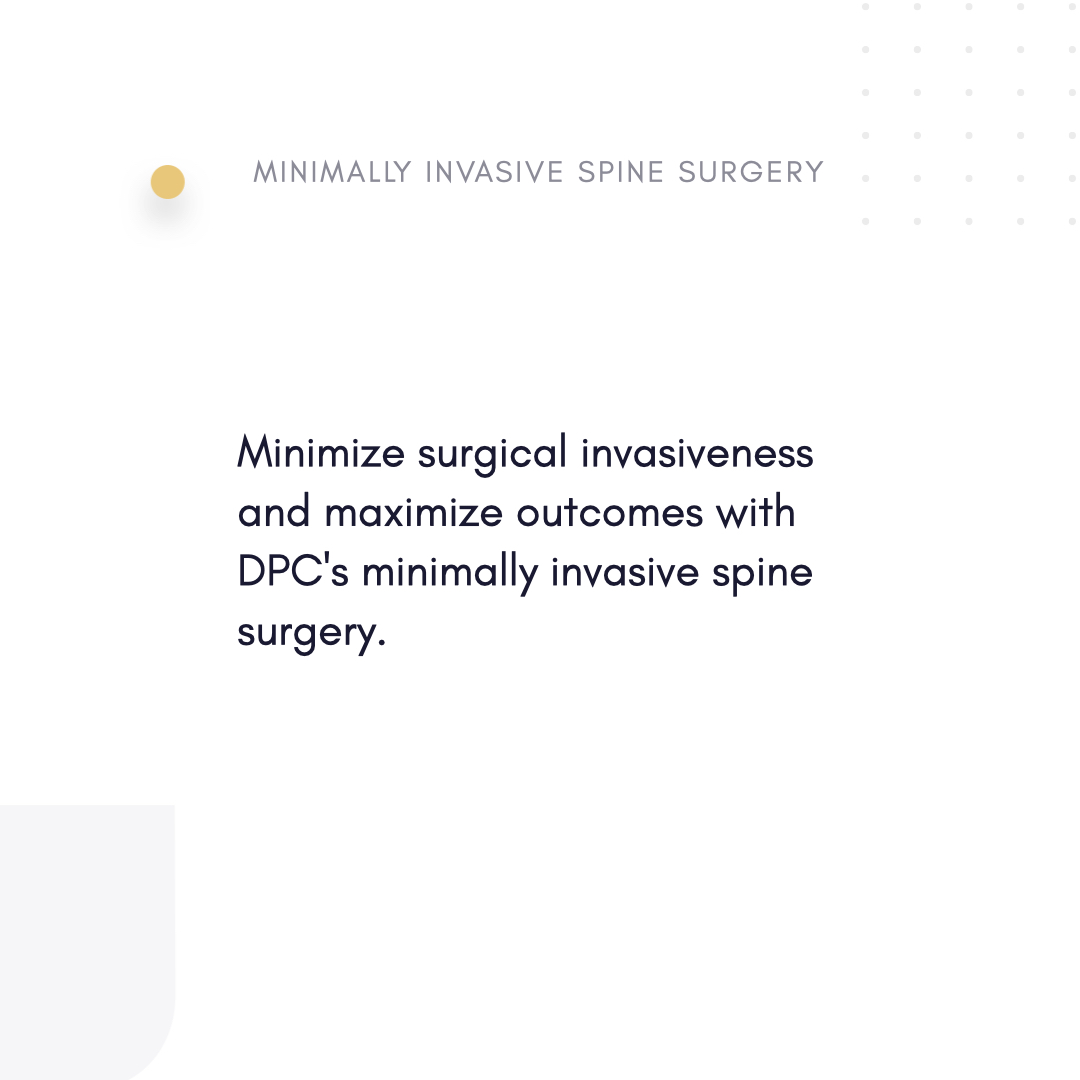Minimally Invasive Spine Surgery (MISS) and Direct Primary Care (DPC): Precision Recovery, Personalized Support
If you have chronic back pain from herniated discs or spinal stenosis that makes it hard to live your life, MISS is a less traumatic surgical option. DPC makes sure that this advanced procedure is done by experts and that you get good follow-up care.

What is MISS? Smaller cuts, faster healing
Some examples of MISS techniques are:
- Microdiscectomy: Taking out disc material that is pressing on nerves.
- Laminectomy: Making room for spinal nerves that are too tight.
- Spinal fusion: Keeping vertebrae stable with as little damage to surrounding tissue as possible.
Recovery takes 2 to 6 weeks, and there is less scarring and pain than with open surgery.
Important information:
- Uses: for treating herniated discs, stenosis, and spondylolisthesis.
- Safety: Less chance of infection (1–2%) and blood loss.
- Costs: DPC lowers fees, while traditional MISS costs between 50,000 USD and 100,000 USD.
Risks of putting off surgery:
- Damage to nerves and long-term pain.
How DPC Improves MISS Results
Direct Primary Care (DPC) replaces broken spinal care with coordinated, patient-first care.
1. Full Pre-Op Optimization
- Advanced imaging: MRI/CT to find the problem.
- Working together as surgeons: Work with the best spine doctors.
- Prehab programs: Make your core muscles stronger so you can heal faster.
2. Clear costs and all-around help
- Prices that include everything: Membership includes labs before surgery, physical therapy after surgery, and follow-up visits.
- Lower prices: Through negotiated rates, you can save between 15,000 USD and 30,000 USD.
- Talk about epidural injections or regenerative therapies as other options.
3. Careful recovery and long-term mobility
- Access 24 hours a day, 7 days a week: Take care of sudden weakness or problems with your bowels or bladder right away.
- Plans for rehab that are made just for you: Help people safely move from walking to core exercises.
- Preventive care: Suggest changes to the way you sit, stand, and move around, as well as ways to keep your weight in check.
Success Stories from Real Life
- Case 1: John, 45, has a herniated L4-L5 disc. John's DPC team did a microdiscectomy, and he was back at work in three weeks.
- Case 2: Maria, 60, has spinal stenosis. Maria's DPC provider did a MISS laminectomy on her, which let her walk again.
Questions and answers: DPC: MISS
- Q: How long after surgery can I drive?
- A: 1–2 weeks for lumbar surgery; DPC clears when pain is under control.
- Q: Do I need a brace?
- A: Not often. MISS doesn't make big cuts that need bracing.
- Q: Do the scans include follow-ups?
- A: Yes. Set up an MRI or CT scan in six months to make sure it worked.
- Q: What if the pain comes back?
- A: DPC looks into how to treat scar tissue or do revision surgery.
Why DPC is the best at taking care of spines
The North American Spine Society (NASS) stresses the need for early action. DPC does this by:
- Cutting down on wait times: 90% of surgeries happen within three weeks instead of the usual six months or more.
- Lessening complications: Proactive PT lowers the number of reoperations by 30%.
- Saving money: Bundled care saves members between 20,000 USD and 50,000 USD.
Get Your Active Life Back with Minimal Invasiveness
It's not just about making smaller cuts with MISS in DPC; it's also about getting the best care possible to help you heal. With DPC, you get a partner who helps you with every step, from diagnosis to rehab, so you can get back to living with less pain and more freedom. No problems with insurance, no broken follow-ups—just expert care that helps you stand up straight again.






